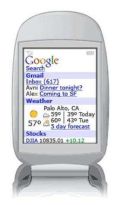BEIJING, Jan. 30 (Xinhuanet) -- Number of mobile phone subscribers in China is expected to reach 440 million in 2006 with 48 million expected to be newly added this year, according to a prediction by the Information Industry Ministry.
The constant expansion of mobile phone subscribers has always been the major income source of the communication business, which is expected to reach 700 billion yuan (87.5 billion US dollars) in2006, up 10 percent over 2005, according to the ministry.
China increased 58.604 million new mobile phone subscribers in 2005, with monthly growth approaching 5 million.
More and more Chinese people begin to use mobile phones. The Information Industry Ministry predicted that 33 percent of the total population will possess mobile phones in 2006. China will firmly hold its first position in the world in terms of its scale of mobile phone subscribers.
www.chinaview.cn 2006/01/30 20:56:48


